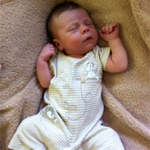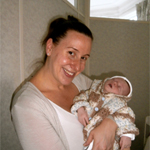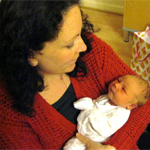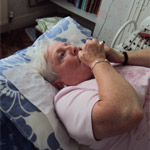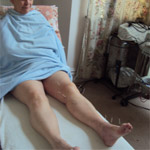Any substance that triggers an allergic reaction is called an allergen. Some of the most common allergens include:
- grass and tree pollen (hay fever)
- dust mites
- animal dander (tiny flakes of skin or hair)
- food allergy (particularly fruits, shellfish and nuts)
An allergy develops when the body’s immune system reacts to an allergen as though it is a threat, like an infection. It produces antibodies to fight off the allergen, in a reaction called the “immune response”.
The next time a person comes into contact with the allergen, the body “remembers” the previous exposure and produces more of the antibodies. This causes the release of chemicals in the body that lead to an allergic reaction. Symptoms of allergies can include sneezing, wheezing, itchy eyes skin rashes and swelling.
There has been some good evidence to show that acupuncture can help relieve the symptoms. Alison found Acupuncture helped her a great deal.
“I first visited Denise Callaghan, Osteopath and Acupuncturist last September for hay fever and allergies. Since being a small child I have suffered with allergies all year round, and it had reached a stage where I just accepted it, not being aware that something such as acupuncture could help.
After the first session I noticed a difference. Since October I have been on a monthly maintenance programme of one session a month and for the first time ever can breathe properly and am pretty much symptom free.
I would recommend to anyone who suffers from hay-fever or other allergies to visit Denise, I can’t thank her enough.” ALISON WARNER (Evolve and Grow, business coach)
Evidence from systematic reviews suggests that acupuncture and moxibustion may be a safe and effective treatment for allergic rhinitis with benefits over conventional medicine (Xiao 2009), that acupuncture can help to relieve symptoms of perennial rhinitis (Lee 2009) and that acupuncture has a similar efficacy to antihistamines (Zhang 2010). However, the reviews also state that the evidence is mixed and the trials generally of poor quality and that more high-quality randomised controlled trials are needed to assess the effectiveness of acupuncture for allergic rhinitis, particularly seasonal (hay fever). (Roberts 2008; Lee 2009; Xiao 2009; Zhang 2010). Recent randomised controlled trials have found that acupuncture used as an adjunct to routine care for allergic rhinitis has clinically relevant and persistent benefits (Brinkhaus 2008) and is cost effective (Witt 2009). Such trials have also found that acupuncture is effective in the symptomatic treatment of perennial rhinitis (Xue 2007) and that active acupuncture is more effective than sham acupuncture in decreasing the symptom scores for persistent allergic rhinitis and increasing the symptom-free days (Ng 2004). (See Table below)
In general, acupuncture is believed to stimulate the nervous system and cause the release of neurochemical messenger molecules. The resulting biochemical changes influence the body’s homeostatic mechanisms, thus promoting physical and emotional well-being. Stimulation of certain acupuncture points has been shown to affect areas of the brain that are known to reduce sensitivity to pain and stress (Hui 2010)
Acupuncture may help to relieve pain and congestion in people with allergic rhinitis by:
- regulating levels of IgE and cytokines, mediators of the allergic reaction to extrinsic allergens (Ng 2004; Rao 2006; Roberts 2008)
- stimulating nerves located in muscles and other tissues, which leads to release of endorphins and other neurohumoral factors, and changes the processing of pain in the brain and spinal cord (Pomeranz, 1987; Han 2004; Zhao 2008; Cheng 2009);
- reducing inflammation, by promoting release of vascular and immunomodulatory factors (Zijlstra 2003; Kavoussi 2007);
- enhancing natural killer cell activities and modulating the number and ratio of immune cell types (Kawakita 2008);
- increasing local microcirculation (Komori 2009), which aids dispersal of swelling.
References
Blaiss MS. Quality of life in allergic rhinitis. Ann Allergy Asthma Immunol 1999; 83: 449-454.
Lund VJ, Aaronsen D, Bousquet J, et al. International consensus report on the diagnosis and management of rhinitis. Allergy 1994; 49: 1-34.
Parikh A, Scadding GK. Seasonal allergic rhinitis.BMJ 1997; 314: 1392.
Ross AM, Fleming DM. Incidence of allergic rhinitis in general practice, 1981-92. BMJ 1994; 308: 897-900.


